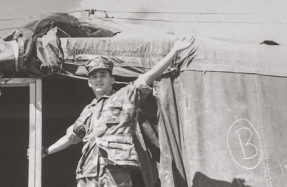BEYOND BULLETS

When browsing “EDC” or “pocket dump” on our favorite forum or social media channel of choice, we see a lot of cool gear. Pistols, holsters, knives, watches, challenge coins, flashlights, and sunglasses all run aplenty on these look-at-me photo threads. Even combs, travel razors, beard oil, and “tactical wallets” all wind up getting meticulously laid out among the supposed daily carry of internet enthusiasts everywhere.
But one item that continues to make fewer appearances than it should is a well-thought-out carry med kit. They’re typically not flashy, expensive, or an inherent source of bragging rights. Medical gear is, in our opinion, one of the things that separates those who are carrying to be prepared and those who are carrying to start conversation. But the particular sundries required to tend the wounded — and the knowledge required to use them properly — are an oft-misunderstood subculture even among armed professionals.
On the battlefield, the days of taking a knee and yelling “medic!” are well past. Likewise for law enforcement, stringing up yellow tape while waiting for an ambulance is the procedure of a bygone era. The advent of domestic terrorism and the intense media publicity showered upon active shooters has, for better or worse, made casualty response a job that can now fall upon anybody regardless of what uniform they wear — if any.
In order to better wrap our heads around the problem, we spoke to two instructors who have made great efforts to spread their wealth of knowledge about trauma medicine to uniformed personnel and citizens alike. Kerry Davis
You’re reading a preview, subscribe to read more.
Start your free 30 days





